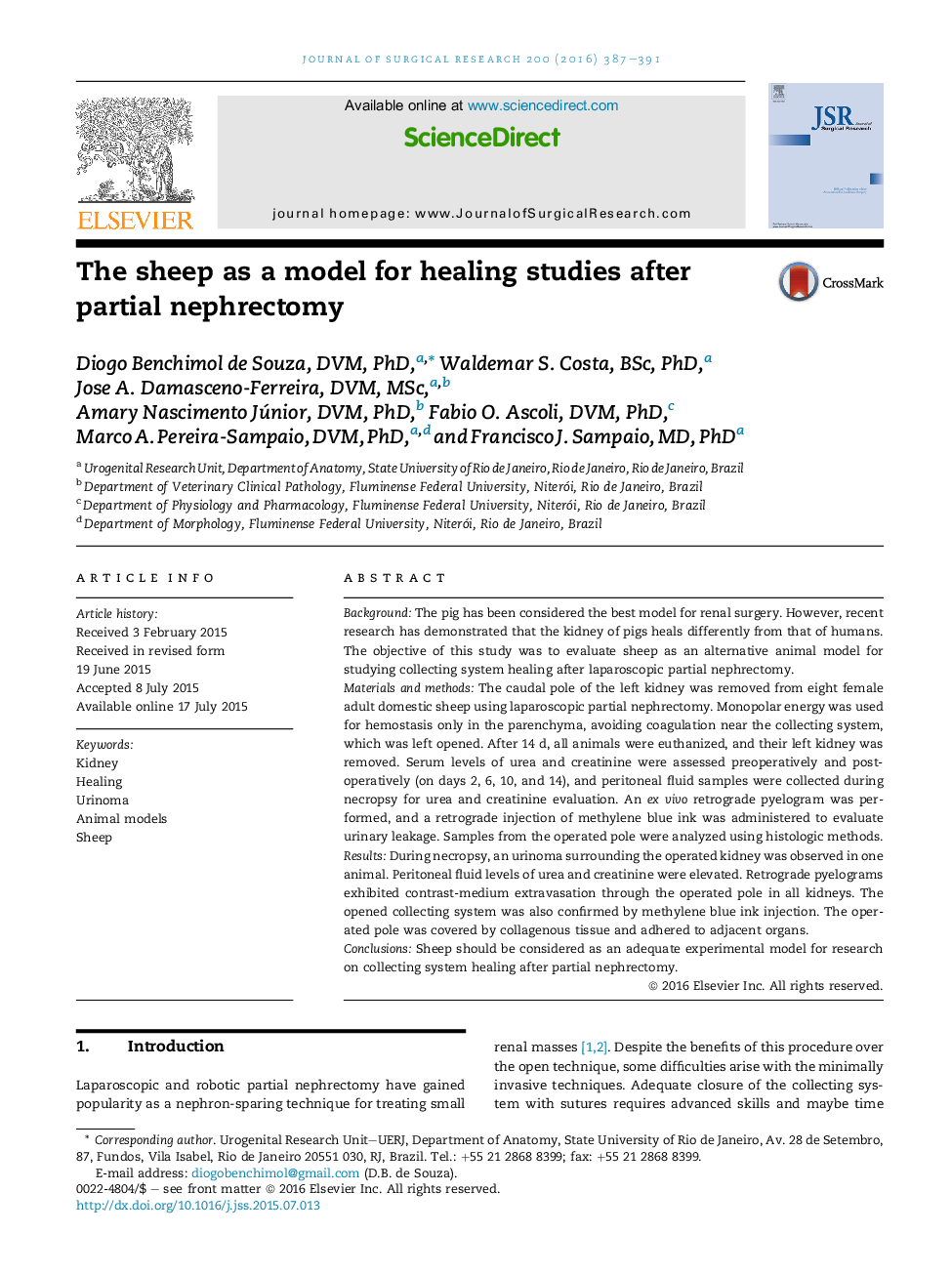| Article ID | Journal | Published Year | Pages | File Type |
|---|---|---|---|---|
| 4299533 | Journal of Surgical Research | 2016 | 5 Pages |
BackgroundThe pig has been considered the best model for renal surgery. However, recent research has demonstrated that the kidney of pigs heals differently from that of humans. The objective of this study was to evaluate sheep as an alternative animal model for studying collecting system healing after laparoscopic partial nephrectomy.Materials and methodsThe caudal pole of the left kidney was removed from eight female adult domestic sheep using laparoscopic partial nephrectomy. Monopolar energy was used for hemostasis only in the parenchyma, avoiding coagulation near the collecting system, which was left opened. After 14 d, all animals were euthanized, and their left kidney was removed. Serum levels of urea and creatinine were assessed preoperatively and postoperatively (on days 2, 6, 10, and 14), and peritoneal fluid samples were collected during necropsy for urea and creatinine evaluation. An ex vivo retrograde pyelogram was performed, and a retrograde injection of methylene blue ink was administered to evaluate urinary leakage. Samples from the operated pole were analyzed using histologic methods.ResultsDuring necropsy, an urinoma surrounding the operated kidney was observed in one animal. Peritoneal fluid levels of urea and creatinine were elevated. Retrograde pyelograms exhibited contrast-medium extravasation through the operated pole in all kidneys. The opened collecting system was also confirmed by methylene blue ink injection. The operated pole was covered by collagenous tissue and adhered to adjacent organs.ConclusionsSheep should be considered as an adequate experimental model for research on collecting system healing after partial nephrectomy.
